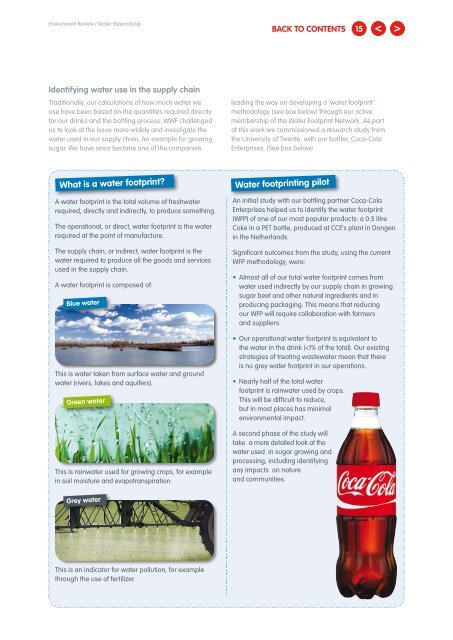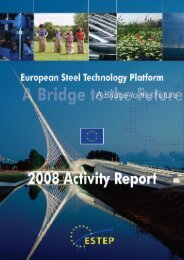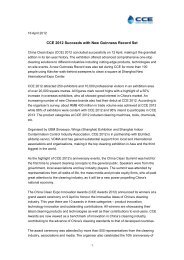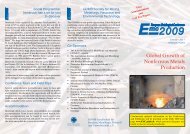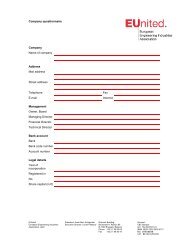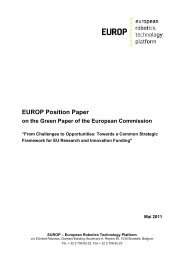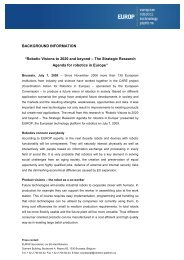Environment Review - The Coca-Cola Company
Environment Review - The Coca-Cola Company
Environment Review - The Coca-Cola Company
Create successful ePaper yourself
Turn your PDF publications into a flip-book with our unique Google optimized e-Paper software.
<strong>Environment</strong> <strong>Review</strong> / Water Stewardship<br />
Identifying water use in the supply chain<br />
Traditionally, our calculations of how much water we<br />
use have been based on the quantities required directly<br />
for our drinks and the bottling process. WWF challenged<br />
us to look at the issue more widely and investigate the<br />
water used in our supply chain, for example for growing<br />
sugar. We have since become one of the companies<br />
What is a water footprint?<br />
A water footprint is the total volume of freshwater<br />
required, directly and indirectly, to produce something.<br />
<strong>The</strong> operational, or direct, water footprint is the water<br />
required at the point of manufacture.<br />
<strong>The</strong> supply chain, or indirect, water footprint is the<br />
water required to produce all the goods and services<br />
used in the supply chain.<br />
A water footprint is composed of:<br />
Blue water<br />
This is water taken from surface water and ground<br />
water (rivers, lakes and aquifers).<br />
Green water<br />
This is rainwater used for growing crops, for example<br />
in soil moisture and evapotranspiration.<br />
Grey water<br />
This is an indicator for water pollution, for example<br />
through the use of fertilizer.<br />
Back to contents 15<br />
leading the way on developing a ‘water footprint’<br />
methodology (see box below) through our active<br />
membership of the Water Footprint Network. As part<br />
of this work we commissioned a research study from<br />
the University of Twente, with our bottler, <strong>Coca</strong>-<strong>Cola</strong><br />
Enterprises. (See box below)<br />
Water footprinting pilot<br />
An initial study with our bottling partner <strong>Coca</strong>-<strong>Cola</strong><br />
Enterprises helped us to identify the water footprint<br />
(WFP) of one of our most popular products: a 0.5 litre<br />
Coke in a PET bottle, produced at CCE’s plant in Dongen<br />
in the Netherlands.<br />
Significant outcomes from the study, using the current<br />
WFP methodology, were:<br />
• Almost all of our total water footprint comes from<br />
water used indirectly by our supply chain in growing<br />
sugar beet and other natural ingredients and in<br />
producing packaging. This means that reducing<br />
our WFP will require collaboration with farmers<br />
and suppliers.<br />
• Our operational water footprint is equivalent to<br />
the water in the drink (


